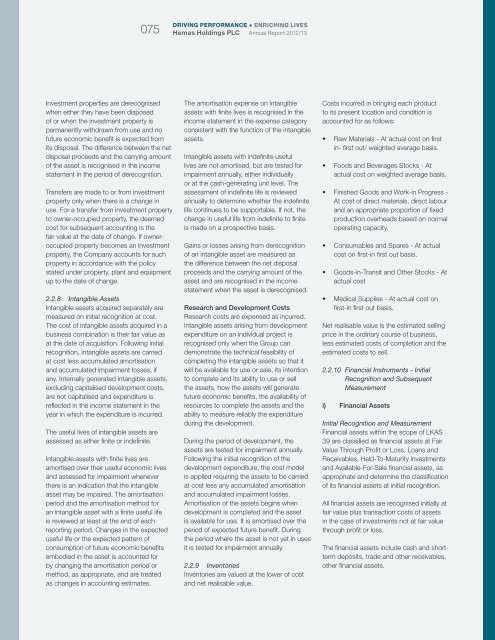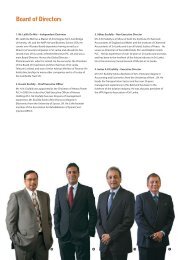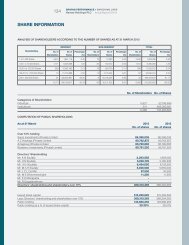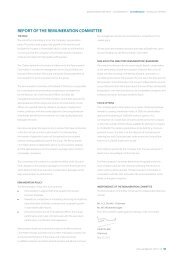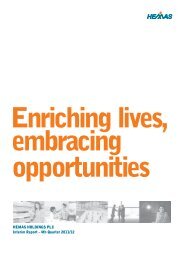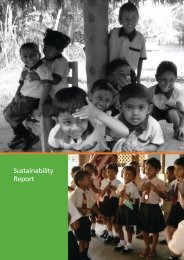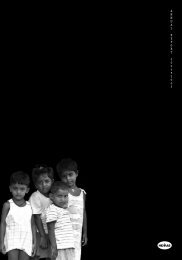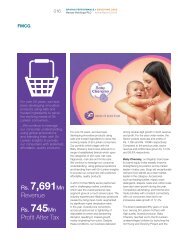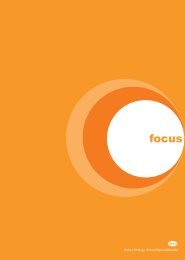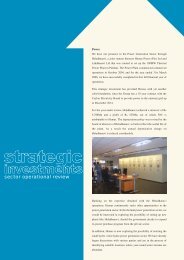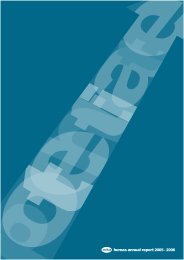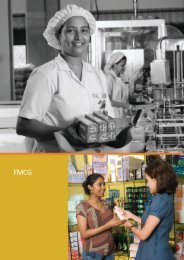Financial Statements - Hemas Holdings, Ltd
Financial Statements - Hemas Holdings, Ltd
Financial Statements - Hemas Holdings, Ltd
- No tags were found...
Create successful ePaper yourself
Turn your PDF publications into a flip-book with our unique Google optimized e-Paper software.
DRIVING PERFORMANCE ● ENRICHING LIVES075 <strong>Hemas</strong> <strong>Holdings</strong> PLC Annual Report 2012/13Investment properties are derecognisedwhen either they have been disposedof or when the investment property ispermanently withdrawn from use and nofuture economic benefit is expected fromits disposal. The difference between the netdisposal proceeds and the carrying amountof the asset is recognised in the incomestatement in the period of derecognition.Transfers are made to or from investmentproperty only when there is a change inuse. For a transfer from investment propertyto owner-occupied property, the deemedcost for subsequent accounting is thefair value at the date of change. If owneroccupiedproperty becomes an investmentproperty, the Company accounts for suchproperty in accordance with the policystated under property, plant and equipmentup to the date of change.2.2.8 Intangible AssetsIntangible assets acquired separately aremeasured on initial recognition at cost.The cost of intangible assets acquired in abusiness combination is their fair value asat the date of acquisition. Following initialrecognition, intangible assets are carriedat cost less accumulated amortisationand accumulated impairment losses, ifany. Internally generated intangible assets,excluding capitalised development costs,are not capitalised and expenditure isreflected in the income statement in theyear in which the expenditure is incurred.The useful lives of intangible assets areassessed as either finite or indefinite.Intangible assets with finite lives areamortised over their useful economic livesand assessed for impairment wheneverthere is an indication that the intangibleasset may be impaired. The amortisationperiod and the amortisation method foran intangible asset with a finite useful lifeis reviewed at least at the end of eachreporting period. Changes in the expecteduseful life or the expected pattern ofconsumption of future economic benefitsembodied in the asset is accounted forby changing the amortisation period ormethod, as appropriate, and are treatedas changes in accounting estimates.The amortisation expense on intangibleassets with finite lives is recognised in theincome statement in the expense categoryconsistent with the function of the intangibleassets.Intangible assets with indefinite usefullives are not amortised, but are tested forimpairment annually, either individuallyor at the cash-generating unit level. Theassessment of indefinite life is reviewedannually to determine whether the indefinitelife continues to be supportable. If not, thechange in useful life from indefinite to finiteis made on a prospective basis.Gains or losses arising from derecognitionof an intangible asset are measured asthe difference between the net disposalproceeds and the carrying amount of theasset and are recognised in the incomestatement when the asset is derecognised.Research and Development CostsResearch costs are expensed as incurred.Intangible assets arising from developmentexpenditure on an individual project isrecognised only when the Group candemonstrate the technical feasibility ofcompleting the intangible assets so that itwill be available for use or sale, its intentionto complete and its ability to use or sellthe assets, how the assets will generatefuture economic benefits, the availability ofresources to complete the assets and theability to measure reliably the expenditureduring the development.During the period of development, theassets are tested for impairment annually.Following the initial recognition of thedevelopment expenditure, the cost modelis applied requiring the assets to be carriedat cost less any accumulated amortisationand accumulated impairment losses.Amortisation of the assets begins whendevelopment is completed and the assetis available for use. It is amortised over theperiod of expected future benefit. Duringthe period where the asset is not yet in usesit is tested for impairment annually.2.2.9 InventoriesInventories are valued at the lower of costand net realisable value.Costs incurred in bringing each productto its present location and condition isaccounted for as follows:• Raw Materials - At actual cost on firstin- first out/ weighted average basis.• Foods and Beverages Stocks - Atactual cost on weighted average basis.• Finished Goods and Work-in Progress -At cost of direct materials, direct labourand an appropriate proportion of fixedproduction overheads based on normaloperating capacity.• Consumables and Spares - At actualcost on first-in first out basis.• Goods-in-Transit and Other Stocks - Atactual cost• Medical Supplies - At actual cost onfirst-in first out basis.Net realisable value is the estimated sellingprice in the ordinary course of business,less estimated costs of completion and theestimated costs to sell.2.2.10 <strong>Financial</strong> Instruments - InitialRecognition and SubsequentMeasurementi) <strong>Financial</strong> AssetsInitial Recognition and Measurement<strong>Financial</strong> assets within the scope of LKAS39 are classified as financial assets at FairValue Through Profit or Loss, Loans andReceivables, Held-To-Maturity investmentsand Available-For-Sale financial assets, asappropriate and determine the classificationof its financial assets at initial recognition.All financial assets are recognised initially atfair value plus transaction costs of assetsin the case of investments not at fair valuethrough profit or loss.The financial assets include cash and shorttermdeposits, trade and other receivables,other financial assets.


